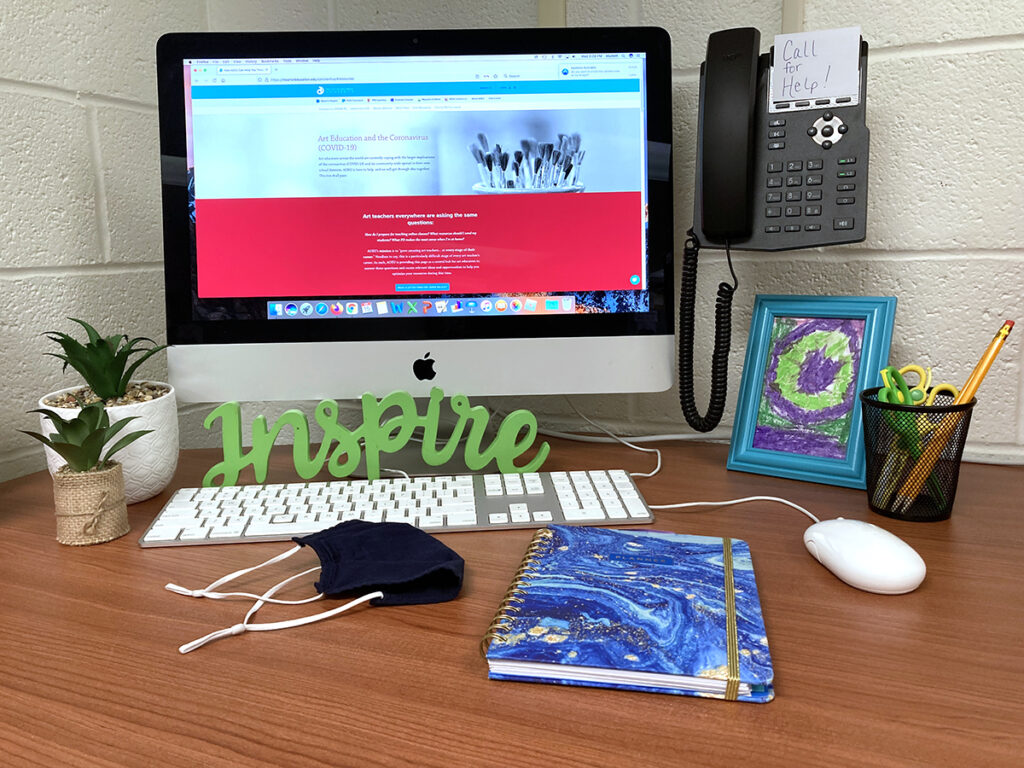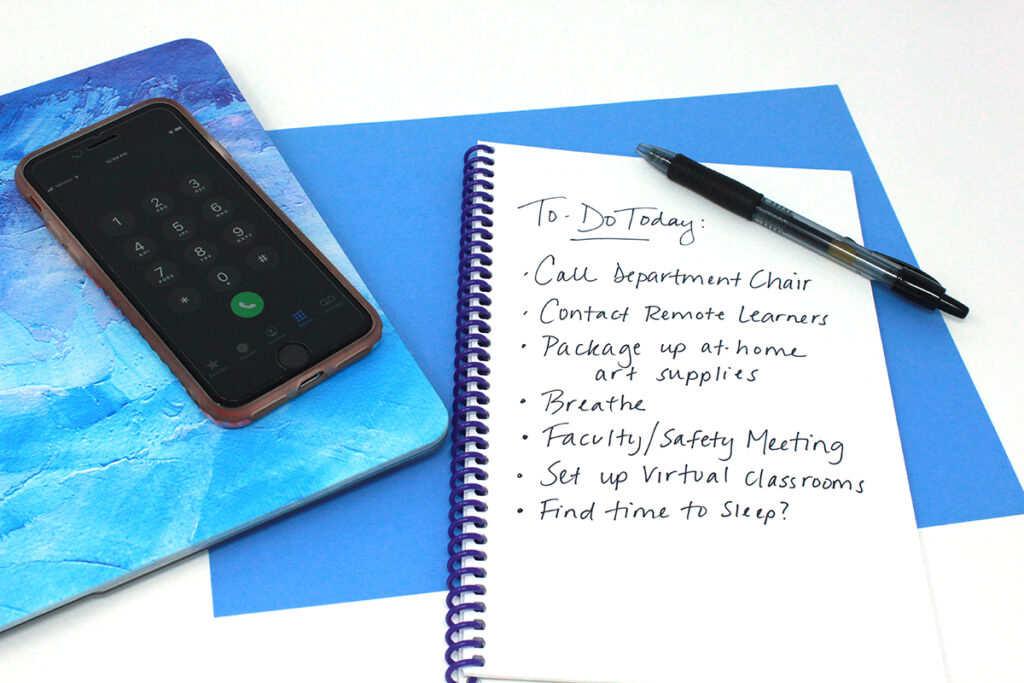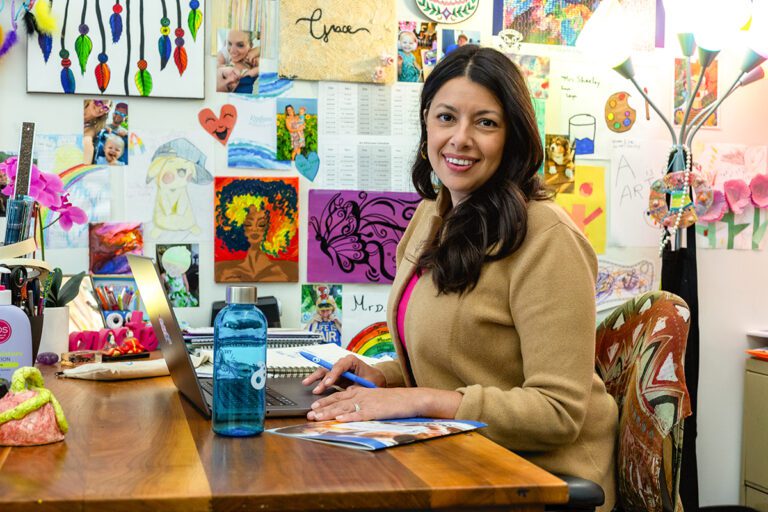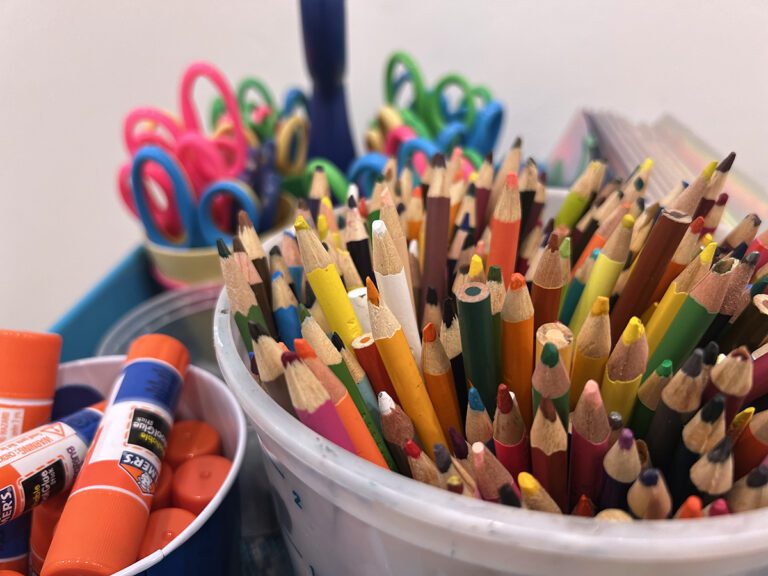Let’s admit it. Teaching during a global pandemic was not on any art teacher’s mind when entering the field of education. Luckily for many art teachers, years of experience helped them navigate uncharted waters despite the increased stress and adjustments that came their way. They quickly adapted to the ever-changing world of online and hybrid education, leaned on each other, and problem-solved like the superheroes they are.
While seasoned art teachers were dealing with these ever-changing demands, there was an entire group of new art teachers stepping into their roles as novices. New art teachers arrived in the pandemic with a variety of teaching experiences, ranging from student teaching in college, virtual student teaching, teacher internship programs, substitute teaching gigs, or alternative settings. Have you ever wondered what was it like to enter your dream job during a global pandemic as your newer colleagues did?

How did brand new art teachers fare?
It turns out that new art teachers have a lot to say when it comes to lessons learned from teaching during the Covid-19 pandemic. Two Pennsylvania art teachers, Brooke, who teaches secondary, and Kailey, who teaches K–6, recently shared their insights with us.
Keep reading to learn four lessons learned from first-year art teachers during uncertain times.
1. It’s okay to phone a friend.
In the age of Professional Learning Communities (PLC), many art teachers are accustomed to working in collaborative teams, learning from each other, and sharing best practices. New art teachers may be asking, “what in the world is a PLC, and where do I find one?” According to both Brooke and Kailey, connecting with your department is critical to finding success when in unknown territory. Leaning on your colleagues, fellow art teachers, mentors, and department leadership can help you feel supported instead of isolated.

Brooke wants new teachers to know you can “confide in your co-workers and department” because they are likely experiencing similar thoughts and feelings in their situations. Not all struggles are because you are new but are likely things your colleagues are experiencing across the board.
Perhaps you are the only art teacher in your school or district. You may be wondering how to find or make a PLC or even connect with teachers in other departments. We have a number of resources to get you started in connecting with teachers, no matter if you are new to teaching art or have years of experience.
Learn how PLCs can work for you and your specific situation:
- Do You PLC?
- 4 Reasons You Should Meet With Other Art Teachers in Your District
- Help! I’m the Only Art Teacher in my PLC!
- 15 of the Best Facebook Groups for Art Teachers
- The PRO Pack, Making the Most of Your PLC
2. You can’t pour from an empty cup.
Everyone has their personal struggles and challenges. Acknowledging the need to maintain a balance for yourself is important. If possible, keep work at work, and dedicate your energy to your personal life when at home. Brooke realized, “The better you are in your personal life, the better teacher you are at work.”
Kailey echoed this sentiment, “I have learned after a few years of teaching that staying late every day is not a badge of honor but a way to burn out and not have enough energy left for your students.” Kailey found ways to replenish herself through therapy, meditation, stretching, and regular exercise. Practicing her own art has soothed her mind and mental health from the stress of the pandemic.
As a first-year or newer teacher, it’s important to be mindful that you can’t possibly do everything that experienced art teachers do. They have had years to get there! But they are there for you when you need support.

3. Be flexible and give your students a safe space to self-express.
Everyone everywhere was impacted by the pandemic in some way. Creating a classroom culture that is conducive to self-expression can allow students to use art to process their lives. Kailey learned to “allow students choice when possible, meet them where they are, and try to learn about their interests and cultures.” Another key takeaway Kailey realized was, “that sometimes just listening to students and letting them share what was going on in their life was more important than actually teaching art. If our students are not supported socially and emotionally, they cannot achieve academically or artistically.”
Brooke considered lessons that were responsive to students’ ever-changing needs. She quickly adapted and supported them with grace and empathy. Brooke stated, “Teaching in this pandemic taught me that I needed to stay on my toes. Every day something changed. Teachers need to stay reasonable. Some days, the kids won’t have internet, or they have to babysit their siblings. Some days, they’ll run out of paint, or maybe they lost it. It’s a challenge for us, of course, but it’s a challenge for the students and families, too.”
Discover strategies to create a culture of self-expression and trust in your classroom studio:
- Understanding Art Therapy (Ep. 202)
- 6 Classroom Management Strategies to Prompt Social-Emotional Learning
- The PRO Pack, Art Therapy Basics
- The PRO Pack, Bringing Art Therapy Techniques Into Your Practice
4. Teamwork will make the dream work.
Around the globe, professionals in education scrambled to reenvision education during the pandemic. Art teachers discovered that staying resilient helped attend to the needs of students. Resilience also maintained the expectations of mandates brought by school administrators and elected officials. Through it all, one common thread that led to success was pulling together and working as a team.
When reflecting on how her district leadership offered support, Kailey shared, “Our administration really took the safety of our school community seriously, which made me feel as safe as I could during the pandemic. I think they did the best they could despite facing immense challenges, constant changes, and endless uncertainty. Things were not perfect, but I think overall, my school worked well as a team and looked out for our best interests.”

Art teachers stepped into a world of unknowns in the spring of 2020. Whether you are a new or experienced teacher, everyone learned a lot of lessons. The experience opened our eyes and brought to light the changes we need to make for a better future for our students and for ourselves. As you strive to be the best art teachers you can be, ask for help, take care of yourself, be flexible, and work together.
What lessons did you learn from these first-year teachers’ experiences?
What advice would you give to new art teachers?
Magazine articles and podcasts are opinions of professional education contributors and do not necessarily represent the position of the Art of Education University (AOEU) or its academic offerings. Contributors use terms in the way they are most often talked about in the scope of their educational experiences.





